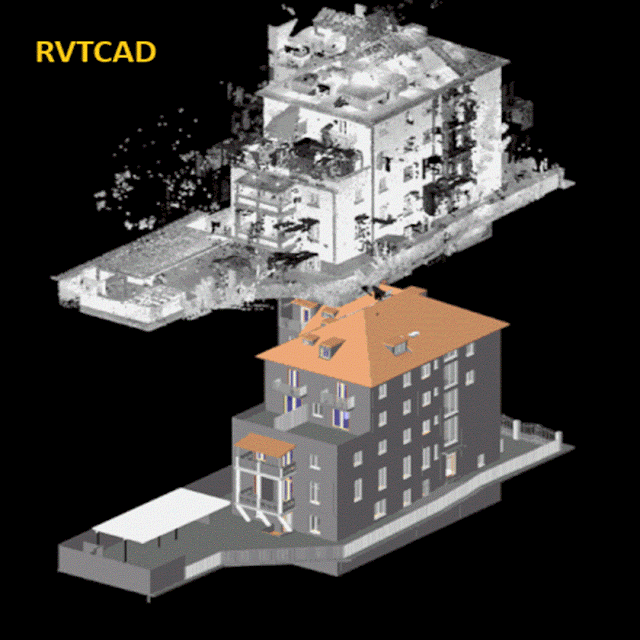Introduction:
In the
domain of architectural, engineering, and construction (AEC) industries,
accurate documentation of as-built conditions is crucial for project success.
Traditionally, creating as-built drawings
involved time-consuming manual measurements and interpretation of existing
structures. However, with advancements in technology, the integration of point
cloud data into computer-aided design (CAD) platforms has revolutionized the
process, offering unprecedented precision and efficiency.
Understanding
Point Clouds:
·
Point
clouds are dense collections of data points in three-dimensional space,
generated through 3D laser scanning or photogrammetry techniques. These data
points represent the precise geometry and spatial attributes of real-world
objects, capturing intricate details of existing structures, landscapes, or
environments. By utilizing specialized scanners and software, professionals can
swiftly capture vast amounts of data, creating comprehensive representations of
physical spaces. Furthermore, the high level of detail provided by point clouds
enables accurate reconstruction of complex architectural elements and
structural components, enhancing the fidelity of CAD-based as-built drawings.
Additionally, point cloud technology facilitates remote data capture, allowing
for the documentation of hard-to-reach or hazardous environments without
compromising safety.
Seamless
Integration with CAD:
·
The
smooth incorporation of point cloud data into CAD environments has greatly
enhanced the efficiency of producing as-built drawings. CAD software allows
users to import point cloud datasets directly, providing a foundation for
accurate modeling and documentation. This integration facilitates precise
visualization and manipulation of as-built conditions within a familiar CAD
interface, empowering designers, engineers, and architects to work efficiently
and collaboratively. Moreover, it reduces the need for manual measurements,
saving time and minimizing errors in the drafting process. Additionally, the
ability to overlay point cloud data onto existing CAD models enables thorough
analysis and comparison, ensuring comprehensive understanding and documentation
of real-world structures.
Enhanced
Accuracy and Visualization:
·
One
of the primary advantages of utilizing point clouds for as-built drawings
is the unparalleled level of accuracy they offer. Unlike traditional
measurement methods, which may be prone to human error or limitations in
precision, point clouds provide a comprehensive and highly detailed
representation of existing structures. This accuracy ensures that CAD-based
as-built drawings reflect the true dimensions and spatial relationships of
physical elements, minimizing discrepancies and potential rework during the
design and construction phases.
·
Furthermore,
point cloud data enables immersive visualization of as-built conditions,
allowing stakeholders to explore virtual representations of real-world
environments with unparalleled fidelity. By overlaying point clouds onto CAD
models, professionals can gain insights into spatial relationships, identify
potential clashes or conflicts, and make informed decisions regarding design
modifications or renovations. This enhanced visualization capability enhances
communication and coordination among project teams, fostering collaboration and
minimizing costly errors.
Efficiency
in Documentation and Analysis:
·
In
addition to enhancing accuracy and visualization, the integration of point clouds with CAD
expedites the documentation process for as-built drawings. Traditional methods
of manual measurement and drafting are time-consuming and labor-intensive,
requiring extensive fieldwork and subsequent interpretation of collected data.
In contrast, point cloud technology enables rapid data acquisition, capturing
detailed information about existing conditions in a fraction of the time.
·
Once
integrated into CAD software, point cloud data acts as a guide for generating
meticulous as-built drawings. Designers can leverage specialized tools to
extract key geometric features, generate accurate floor plans, elevations, and
sections, and annotate details directly within the CAD environment. This
streamlined workflow accelerates the production of as-built documentation while
maintaining high levels of accuracy and consistency across drawings.
·
Moreover,
point cloud data facilitates advanced analysis and simulation capabilities
within CAD environments. By leveraging the rich spatial information contained
within point clouds, designers can perform clash detection, structural
analysis, and environmental simulations to evaluate design feasibility and
optimize performance. These analytical tools empower decision-making throughout
the project lifecycle, from initial design concepts to facility management and
maintenance.
Conclusion:
In
conclusion, Rvtcad the integration of
point clouds into CAD environments has transformed the process of creating
as-built drawings, offering unparalleled precision, efficiency, and
visualization capabilities. By leveraging advanced scanning technology and CAD
software, professionals can capture, model, and document existing conditions
with unprecedented accuracy and detail. This seamless integration enhances
collaboration, accelerates project timelines, and facilitates informed
decision-making, ultimately driving greater efficiency and success in AEC
projects. As the adoption of point cloud technology continues to expand, its
role in shaping the future of as-built documentation is poised to become even
more pronounced.

.jpg)





.png)


.jpg)